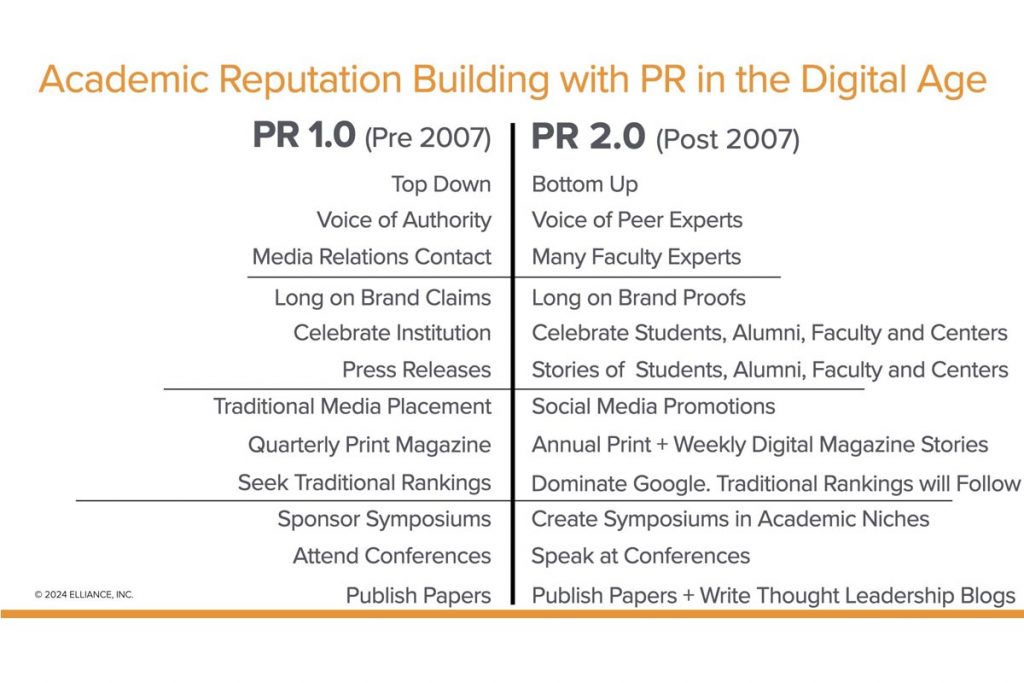| Apr 13, 2024
How to Build University Reputation in the Digital Age with PR 2.0

With mass adoption of smartphones and social media, traditional public relations, or PR 1.0, has evolved into PR 2.0. The traditional rules of PR for building reputation in key areas and conveying values have fallen to the way side, and a new paradigm has emerged. Instead of relying on media relations contacts as gatekeepers for the select few, authority and expertise is now flowing from a groundswell of faculty, staff, students and alumni conversations. The voice of authority has been replaced by the voice of many peer experts. Mass communications has been replaced with personalized messaging.
Today’s public relations 2.0 marketers need to employ and harness personalized, story-centered communications to steer their institutional brand:
Create Buzz on a Person-to-Person Level
In contrast with the mass communications style of traditional public relations, PR 2.0 brand journalists create influence by starting, joining and shaping one-on-one conversations. They rely on storytelling rather than press releases. They make the faculty, students, alumni and the centers of excellence the hero of the story, positioning the institution as the enabler. They promote content because each instance of sharing creates a ripple effect of word-of-mouth influence.
Harness Content to Strengthen Institutional Reputation
In the world of PR 2.0, brand journalists let the forces they control, and the forces they don’t, become mutually reinforcing. They curate content, spark conversations and promote content in channels they control (“owned” media, such as the website and social networks) and monitor the channels they don’t control (the social media of people/organizations in your network). Armed with the knowledge that Google page one rankings are fueled by fresh content, they transform their static print magazines into digital streams of SEO-optimized stories. Furthermore they encourage their faculty to supplement academic publishing with thought leadership blogs. They know that these incremental Google page one ranking gains will eventually translate into traditional university rankings.
Command Thought Leadership
Instead of encouraging their schools to sponsor conferences, the PR 2.0 professionals spur deans and faculty to create new symposiums in emerging niche areas of institutional advantage. Instead of asking faculty to attend conferences, they direct them to speak as thought-leaders at these events.
Fortify All Touchpoints
Finally, the PR 2.0 professionals encourage their institutions to invest in first impressions, including brand, website, wikipedia listing, social media channels, search engine snippets, open houses, information sessions, facilities and grounds, classrooms, tours, and admissions office décor. All entry points to your brand must be right, tight and bright — and refreshed periodically.
We learned these best practices in serving over 100 colleges and universities including liberal arts college, STEM colleges, Catholic or faith-based school, health sciences schools, engineering schools, law schools, business schools, medical schools, agriculture schools and others.
If you are seeking a agency that can assist you with building reputation in the digital age, review our marketing and PR capabilities and consider contacting us.
